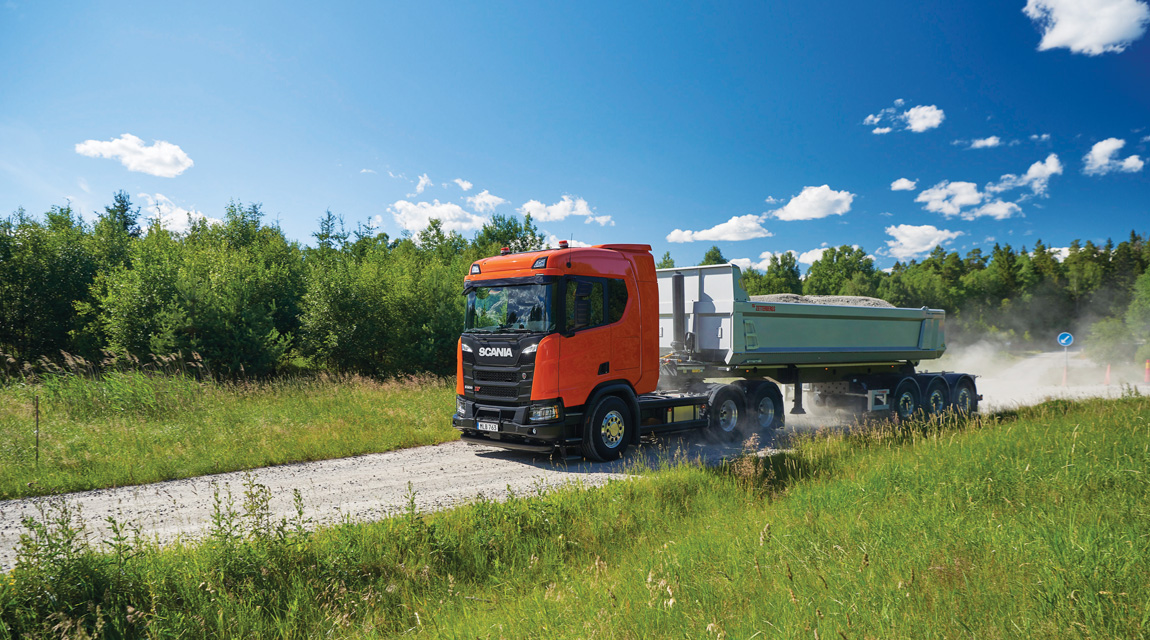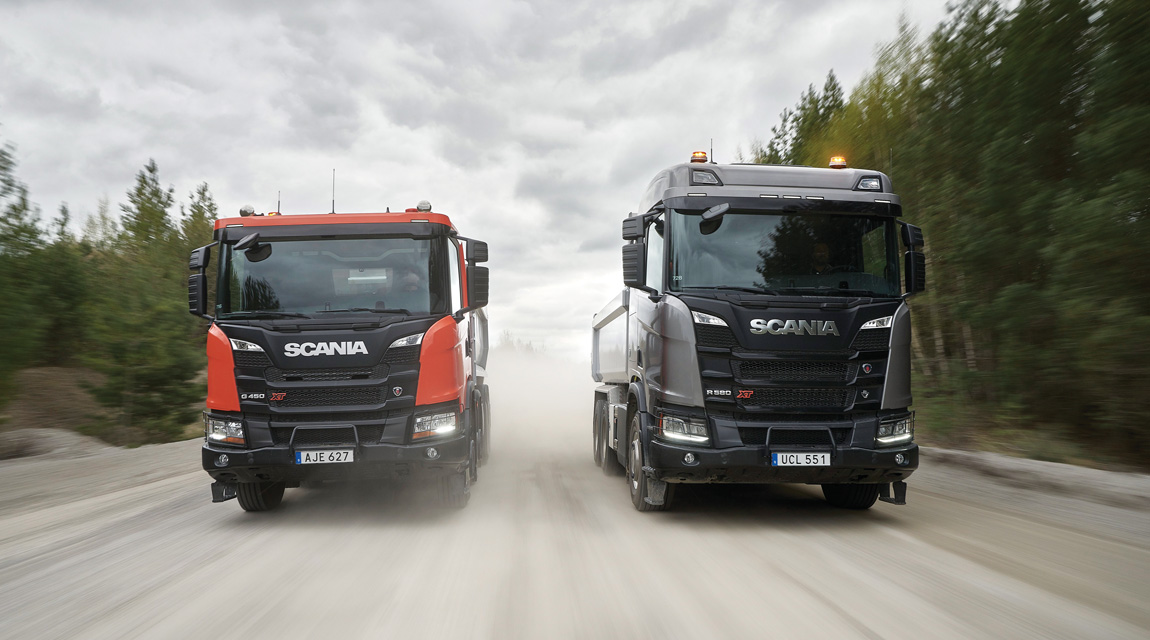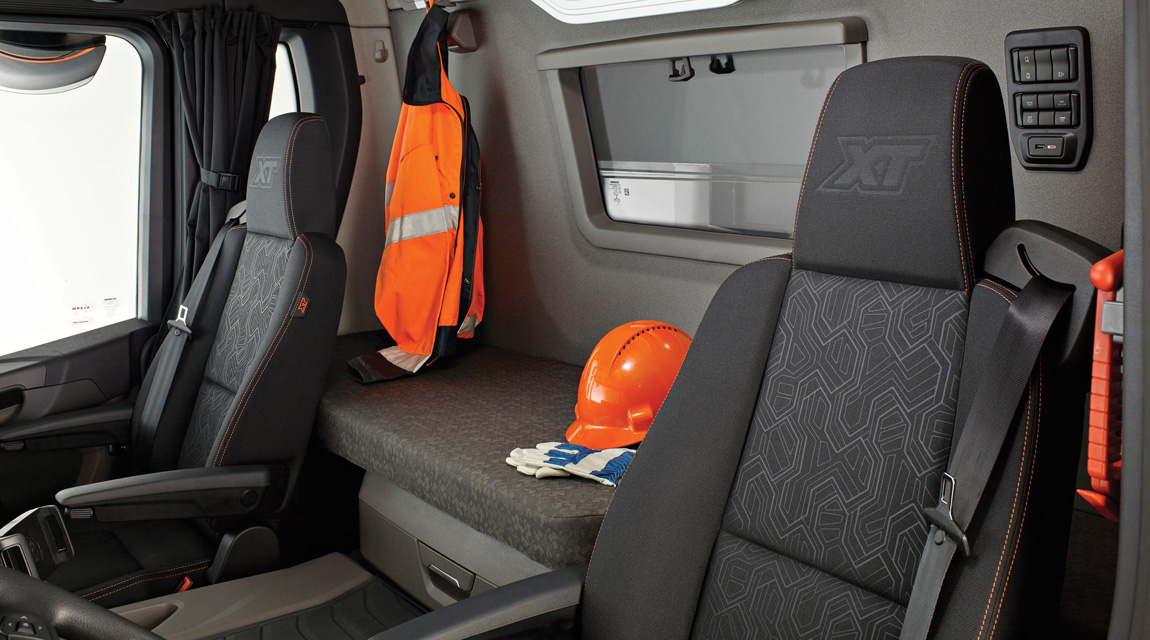XT: Scania’s new “Range Hero”

Jarlath Sweeney, from Fleet Transport, drives Scania’s new “Xtra Tough” range of construction-oriented vehicles.
It was inevitable that Scania would introduce its own construction-orientated range of trucks, just like Volvo (FMX) and Mercedes-Benz (Arocs) have done in recent years. Actually, Iveco was the forerunner in this arena, with the Eurotrakker…
In fairness to Scania, however, the new XT range extends across all of its cab types: from R to G to P-series, and covers many different configurations catering for a wide variety of applications.
XT means “Xtra Tough” in Scania speak, and is the second phase of the brand’s “New Truck Generation” to follow the award-winning S-series flagship and new R-series. In the pipeline is the full roll out of the P-series distribution and alternative-fuel powered ranges.

The truck and bus manufacturer is clearly focused on increasing market share in the growing sectors of construction, timber haulage and mining – segments of industry that need robust, reliable trucks for arduous operations.
“Three or four years ago we launched an offensive at the European level, in which Scania gradually positioned itself as a strong player in the construction sector,” stated Anders Lampinen, product director, Construction, Scania Trucks, at the Truck of the Year Award presentation.
“The Scania XT is characterised by attributes such as an extremely robust front, while also being a clear signal of our ambitions for growth in the construction segment,” he added.
“With features such as day cabs, leaf springs, and double-drive bogies, the construction hauliers will soon have access to all the configurations they need to deal with the various challenges they face in their assignments on a daily basis.
“We know that there is a great deal of interest in the new truck generation and it has been well received. Construction customers have been longing for the new day cabs, more engine options and the typical 6×4 or 8×4 configurations they need,” said Erik Ljungberg, senior vice president, corporate relations.

“Interest is also strengthened by the fact that Scania so clearly prioritises putting the ability of our customers to achieve sustainable profitability at the forefront of a close partnership. The XT trucks are tough, sleek and perfectly designed for the most demanding tasks.
“Years of development have been invested to design the range for the many applications in the multi-faceted construction industry. Fuel savings of up to four percent have been achieved. Another objective we achieved is to assure up time,” he added.
“XT can be specified for all Scania’s cab versions: P, G, R and S, whatever the drivetrain – from V8 to nine-litre diesels with automated or normal gearbox.
“One of its best features is the heavy-duty bumper that protrudes 150 mm in front of the cab line. Together with a built-in skid plate and headlamp protection mesh, the XT has a robust look. Hidden behind the number plate housing is the 40-t towing bolt.
“Scania XT is our range hero,” Ljungberg concluded.
Test Drives
Scania’s demonstration team laid on 15 different variants of the XT range based on its four cab types – S and R-series along with newly launched G and P-series. With the 8×4 rigid configuration being popular in the construction sector, the chance to take the G410 8×4 with mixer first off was not to be missed.

As a unit, the G410 8×4 seemed well balanced as we went through the off-road (gravel) sections with the five-phase exhaust brake used at times. Its differential lock with two settings can be engaged on the fly. Unusually, it came with a nine-speed manual gearbox.
Space within the cabin is better all round with excellent visibility between the A-pillar and wing mirror housing.
One of the final vehicles driven on the day at Scania’s vast demonstration centre was the new P410 with 305 kW in 6×6 configuration. This spacious day cab had enough room behind the seats for a rest bunk, offering plenty of room to lie down. Fitted with skip loader bodywork, it had a six-speed Allison automatic transmission.
Two versions of the R-series in XT design and striking livery were also tested: the R650 6×4 tractor-unit and the R580 6×4 rigid tipper. Pulling a Doll low loader, the combination of the R650 and an old Caterpillar dozer on board totalled 50 t gross vehicle mass (GVM). With the help of 3 300 Nm of torque, the challenge was met with ease. The 484 kW rating is now from the revised SCR-only range.
On the downhill sections, the all-powerful 4 100 Nm retardation system kicked in once the footbrake was pressed slightly and the speed at that time was fixed for a safe descent. Additional retardation through the five-stage stalk on the steering was there if needed.
The other R-series – the R580 6×4 – had the newly developed “clutch on demand” system, which does not need to be used at all times; just when shunting, or hooking up to a trailer or skip. This tipper had 24 t GVM.
Another 8×4 configuration was driven with a high-sided tipper body loaded to 32 t GVM. The G500 with high-roof day cab also had space to specify a rest bunk, which brought back memories of the days of a similar, if less-wide, version in the Hino 8×4 cabs.
Two more runs completed the very interesting day: the S730 6×4 rigid and trailer at 25,25 m and 64 t GVM; and the big daddy of them all, the S730 6×4 double-drive trailer grossing 104 t with a wide CAT dozer on board the Goldhofer low loader, which measured 28,5 m overall.
Developing the new XT range was not a job for the faint hearted, but a task that Scania is extremely capable of undertaking with precision, efficiency and safety.
As regular readers of FOCUS know, this magazine has been appointed an associate member of the International Truck of the Year (IToY)! FOCUS is the sole South African magazine to have joined this prestigious body. One of the advantages of this association is access to exclusive articles, specially written for FOCUS by ITOY jury members. This is one such article.
Published by
Focus on Transport
focusmagsa




